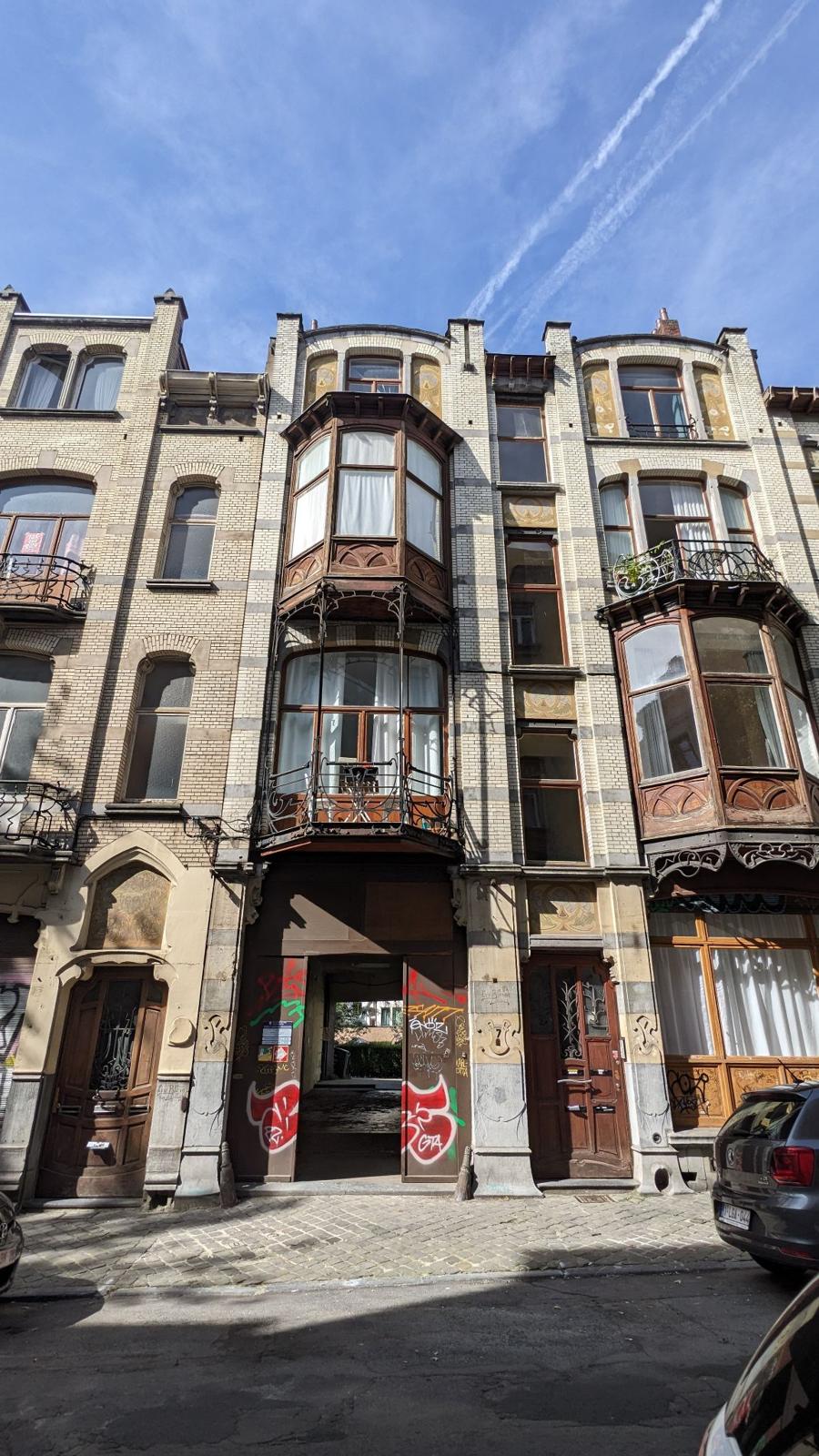Other travel notes
- European bathing locations
- Bosanski Brod - how the other half live
- Pianos in France
- A slice of Brod
- World heritage sites
- Barcelona by bike
- The biodiversity of dragons' teeth
- French night trains
- Let's Go! - exploring Gorizia and Nova Goriza
- A lasting legacy
- Plan-free London to Morocco
- Meet and Greet Lubeck
- What are the chances of missing a connection?
- How do you solve a problem like Monturiol?
- Sports report
- Sunnyland - an anti-war advert?
- Swedish night trains
- The architecture tram
- Third Place
- Taking the train to Spain
- Could this problem-solver solve today's biggest problems?
- A divine solution to the Zaragoza Delicias problem
Meet and Greet Brussels
With a couple of hours free before catching the Eurostar back to London, Gilles and I went for a wander around St Gilles…
A month before, I had been here with my family and we’d had lunch in Saint-Gilles. How about going back there, but this time with ‘Greeter’ Gilles to guide me?










It’s baroque decoration makes it popular with tourists but the significance of the place in history would make it the perfect place to bring your kid if you want them to grow up to run a free-market think tank.
We walked up to the Porte de Hal, which used to be one of the gates to the city. It was nearly demolished, along with the walls, in the rush to expand the city. Thankfully it was saved and it’s now a museum where you can learn about the history of the city.
“It’s an old part of a young country.” Gilles pointed out.
“Belgium has only existed since 1830. Before that is was part of many things, Burgundy, Spanish Netherlands, Austrian Netherlands, United Kingdom of the Netherlands”.
And while each change has left some sort of mark, what we are going to see is the product of Belgium’s independence.
Outside the walls there was no need to worry about old buildings - it had just been fields and there was carte blanche to make whatever any patron with some money (and an architect with an imagination) wanted. Out of that, Art Nouveau emerged.
Despite moving outside the city walls, space was still at a premium, but architects like Victor Horta referenced nature, playing with iron and steel to make more organic shapes. Windows were softened with delicate architraves, like here on the Winssinger house, rue Hôtel-des-Monnaies.
You can find out more about Horta’s works by visiting the Victor Horta Museum on rue Américaine.
My tight schedule meant we needed to keep on going.
Other architects were also inspired.
Saint-Gilles has always been a place for people from diverse backgrounds. Embellishment was carried out, even on modest properties. We walked through an access way to the communal gardens for one block where we could see that the buildings weren’t so fancy from the back - something I wouldn’t have done by myself.
We went for a wander along the Parvis de Saint-Gilles named after the church at the western end.
“It’s a popular place to meet friends and talk to each other about how to make the world better”
I was going to suggest the phrase ‘put the world to rights’ but Gilles has spotted something wrong.
A man has dropped an empty plastic bottle on the pavement, so Gilles picked it up for him and gave it back as if he’d dropped it by accident.
With this bit of the world put to rights, I take some photos of the an Art Deco café - by the 1920’s Art Nouveau was old hat.
But revolutions in architecture weren’t the only thing afoot.
A few doors down is the Maison du Peuple, which was build in 1906 as a place for workers to meet and discuss ideas to bring about social justice or plot revolution - depending on your point of view. Lenin gave a speech here in 1914.
But it wasn’t just a talking shop. It was one of a number of centres where people could pool resources to help those in need, such as in times of illness.
These days it’s a culture centre, music venue and cafe.
At the end of the street is Brasserie de l’Union - a place to get authentic Belgian food and beer (cash only).
I came here with my family a month previously and it would have been nice to stop and have a cheeky half with Gilles, but alas time was running out.
Time to go back to Blighty…
If you would like to book a tour with a Brussels Greeter like Gilles, there are more details here: Brussels Greeters